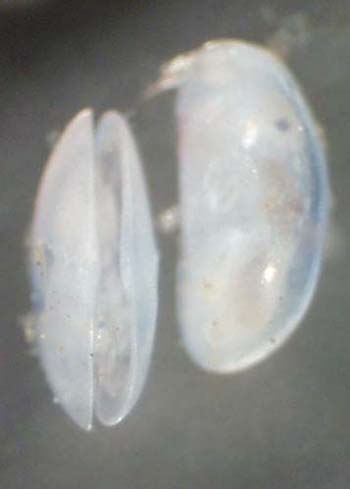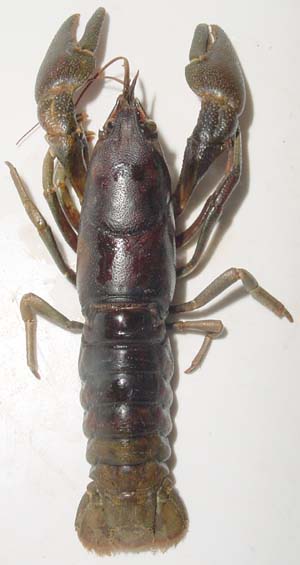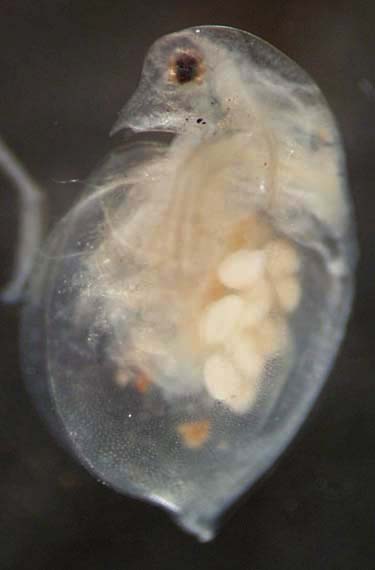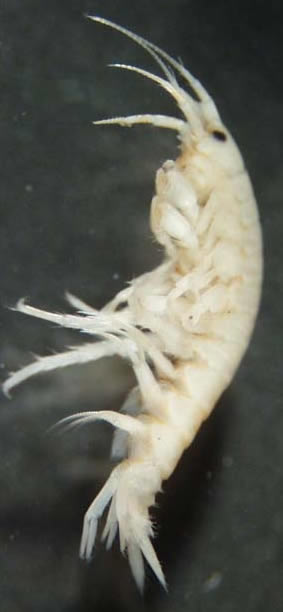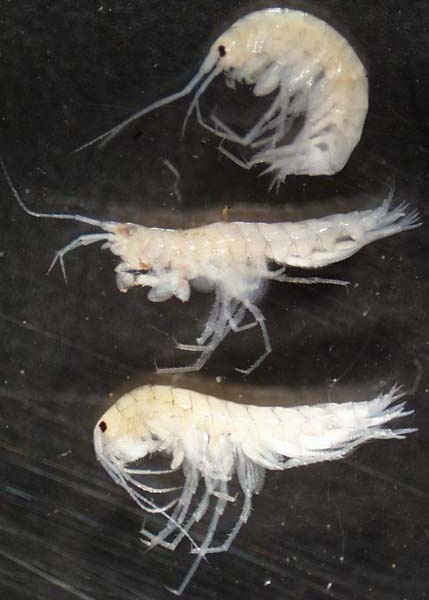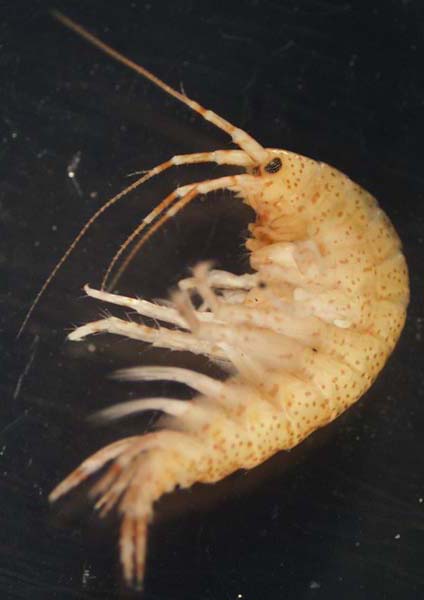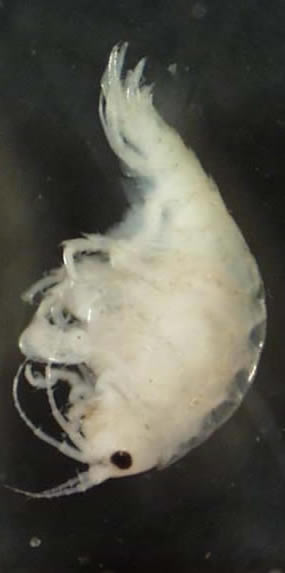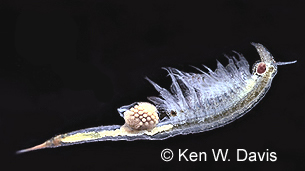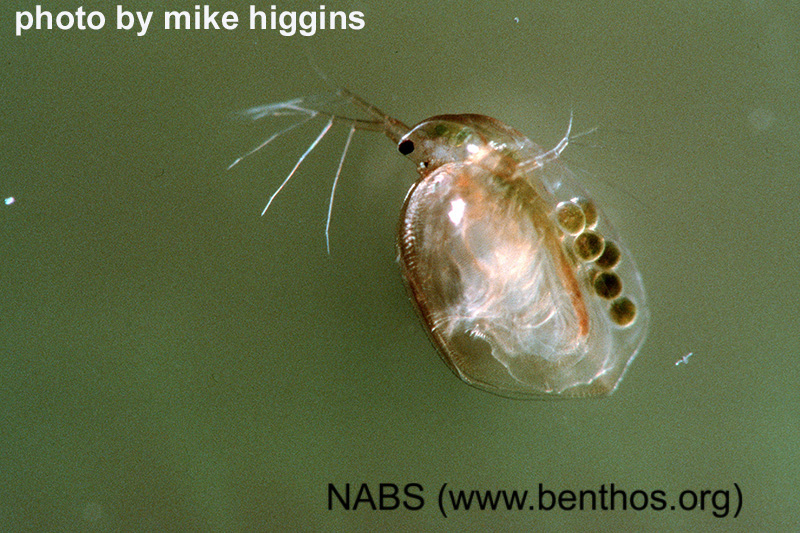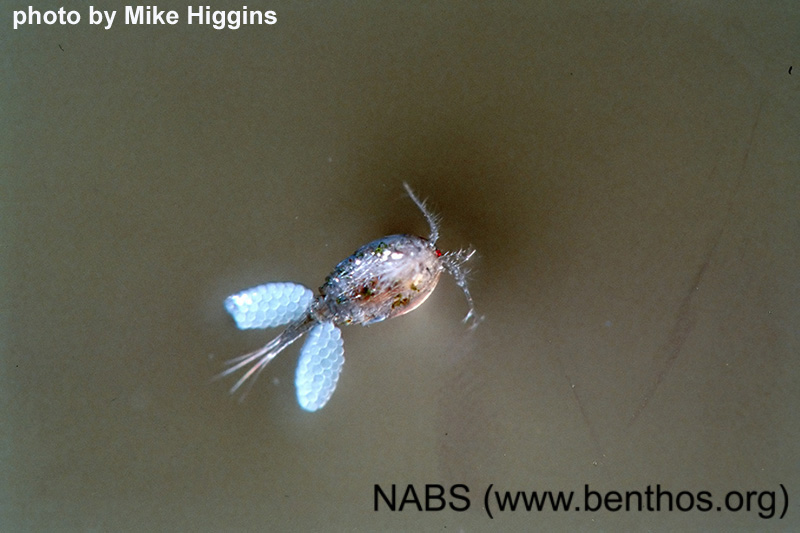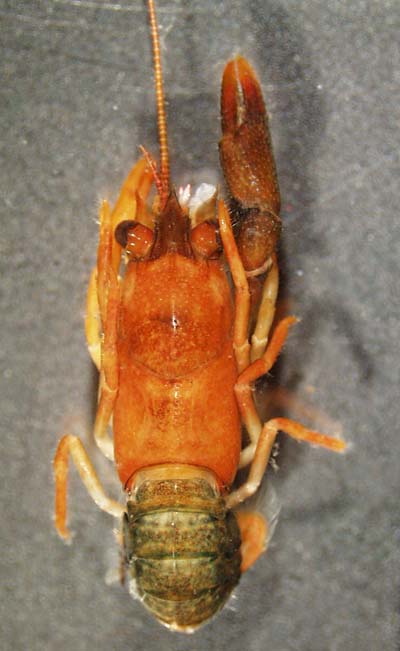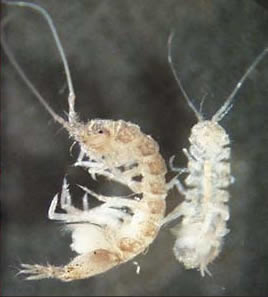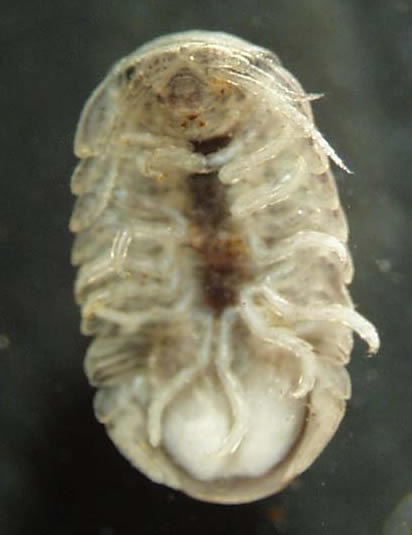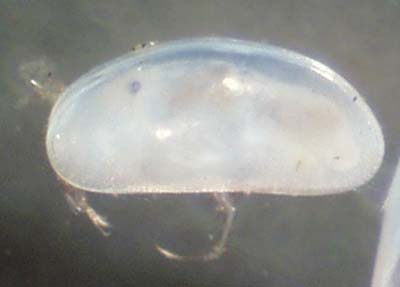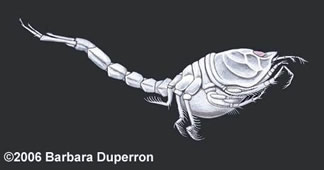
THE XERCES SOCIETY FOR INVERTEBRATE CONSERVATION Aquatic Invertebrates in Pacific Northwest Freshwater Wetlands |
| Identify taxa |
Subphylum Crustacea |
|
Crustacea are probably one of the most recognizable groups of macroinvertebrates. The crayfish in particular are large, active, and often brightly colored, making them easy to see for anyone peering into the waters along the edge of a stream or lake. In wetland samples in the Northwest, Crustacea likely to be found include seed shrimp, water fleas, sowbugs, copepods, scuds, and maybe even crayfish or fairy shrimp. The greatest diversity of crustaceans is in marine and estuarine environments, but a few live on land (pill bugs or roly polies) and many live in freshwater or wet terrestrial habitats (crayfish, sowbugs, scuds, freshwater shrimp, tadpole shrimp, and others). Some take advantage of extremely temporary water sources; fairy shrimp are well known for developing rapidly in vernal desert pools after a rain, then laying eggs that are dormant until the next rain pools enough for them to complete their short life cycle. Species like the fairy shrimp can be very sensitive to habitat modifications, but many other types of Crustacea are quite tolerant. Scuds and sowbugs are often found in urban waterbodies where most other macroinvertebrates have vanished. Crayfish can also deal with substantial changes in their surroundings. Unfortunately, this high level of tolerance to habitat changes allows some crustaceans to be easily transported and invade new habitats. Crayfish have been introduced to the Pacific Northwest from the Midwest, Southeast, and around the world. Smaller introduced crustaceans like copepods regularly become part of our aquatic communities through ship ballast, boat motors, and other means. The Chinese mitten crab has been introduced via the aquarium trade. Unfortunately, these introductions have caused substantial harm to native crustaceans and other aquatic and terrestrial animals. Read more about the introduced crustacea in the west. |
|
| Class/Order Key |
|
|||||||||||||||||||||||||||||||||||||||||||||||||||||
Class/Order
List:
|
|
© 2007 Xerces Society
Contact info@xerces.org


